 As the increase in ISIS-related terrorist attacks triggers panic and backlash in cities worldwide, they’re just part of day-to-day life in Baghdad. Borzou Daragahi goes inside the year’s deadliest, speaking to those whose lives were forever changed by a bombing that left more than 300 people dead.posted on Oct. 30, 2016, at 6:40 p.m.
As the increase in ISIS-related terrorist attacks triggers panic and backlash in cities worldwide, they’re just part of day-to-day life in Baghdad. Borzou Daragahi goes inside the year’s deadliest, speaking to those whose lives were forever changed by a bombing that left more than 300 people dead.posted on Oct. 30, 2016, at 6:40 p.m.
BAGHDAD, Iraq — Dhulfiqar Oraibi hadn’t even wanted to leave the house that Saturday night.
He was tired. Earlier that day, the 16-year-old and his 26-year-old brother, Muthana, had gone to Baghdad’s International Airport to pick up their father, back from a business trip to Italy. It had been hot outside, with temperatures well above 90 degrees for much of the day. All were cranky from fasting dawn to dusk during Ramadan. Dhulfiqar was taking an evening nap when his father felt drawn to his youngest son’s second-floor bedroom to check on him.
“This feeling came to me and just drew me upstairs,” said Ghanim Oraibi, a former star defender on Iraq’s national soccer team, who rarely climbed stairs because of a nagging knee injury. “I spent five minutes watching him sleep and had this feeling it would be the last time I would see him.”
The explosion struck three hours later, at about a quarter to one in the morning of July 3, a walloping boom that shook the ground beneath the central and southwest neighborhoods of the Iraqi capital. Ambulance and police sirens erupted throughout the city. A plume of thick black smoke rose, filling the night sky. Oraibi, woken by the explosion, searched for his sons but couldn’t find either of them. He tried both of them on their phones, finally reaching Muthana. Over the din, all he could make out was “pray for us” before the line went dead.
Oraibi had no idea Dhulfiqar had been coaxed out of his nap by Muthana and by his son-in-law, Ahmed Kadhem. The young men had left the house to take advantage of the cooler late-night temperature for a last-minute shopping trip to the central Baghdad neighborhood of Karrada. Eid al-Fitr, the weeklong holiday at the end of Ramadan, was coming up, and they wanted to buy some new clothes ahead of a vacation in the northern city of Erbil. So they joined the thousands of people who had flocked to the streets that night, taking advantage of the stores, cafés, and restaurants that had come back to life since Iraq’s Prime Minister Haider al-Abadi lifted an unpopular 12-year midnight curfew last year.
“I spent five minutes watching him sleep and had this feeling it would be the last time I would see him.”
Hundreds of people were in the streets — some shopping, others drinking tea and smoking shisha, still more simply out for a late-night stroll — when the explosion went off. The suicide bomber set off a car bomb at a key point along Inner Karrada street, between the Hadi and Laith multistory malls. Witnesses described a sound like a huge drum in their ears and an impact that tossed people dozens of feet away. Fire quickly engulfed the entire area, and the sounds of screaming competed with the wailing of car and building alarms.
In the confusion, some people out on the streets ran inside, worried about more bombs going off, while others already in the shops fled deeper into the shopping centers. But poor construction standards and minimal fire safety regulations meant the explosion set both buildings alight. More than 300 people died in the bombing and subsequent fires. The attack, claimed by ISIS, plunged a lively Ramadan night in one of the capital’s most vibrant districts into a scene of horror. Some of the bodies were so badly mangled that they have yet to be identified, more than three months later. The bodies of others who died appeared unharmed, their lungs scorched by toxic smoke inhalation as perfumes from the many fragrance and cosmetics shops burned.
Muthana and a friend spent hours searching through the bodies at the mall. Working alongside rescue workers, they pulled out scores of bodies. Eventually he identified his brother-in-law, Ahmed Kadhem, by the watch he had given him. It was already daylight when they came upon Muthana’s little brother. “The last one was Dhulfiqar,” he said. “His legs had been burned off.”
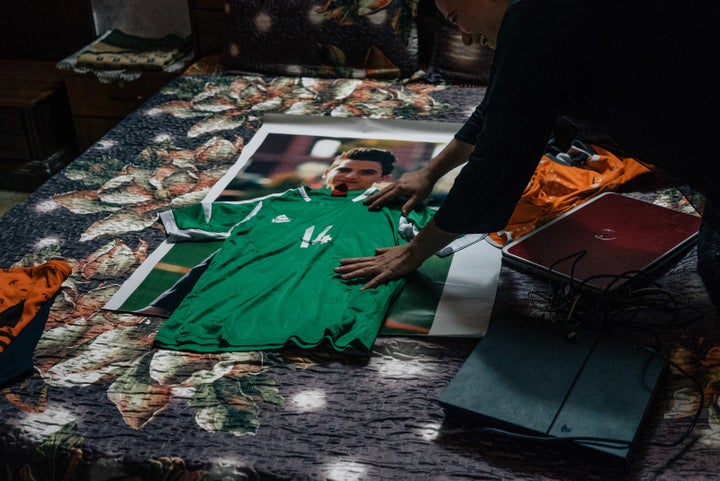
Ghanim Oraibi’s wife places a football jersey over a picture of their 16-year-old son Dhulfiqar, Sept. 24, 2016. Alice Martins for BuzzFeed News
For days afterward, mourners beat their chests and wept in endless and all-too-familiar processions of grieving. The dead were carried in simple wooden coffins from mosques across the capital, placed on the top of minivans, and taken to the great cemetery at the shrine city of Najaf, where Shia bury their dead. Sunnis took their dead to the cemetery at Abu Ghraib, just to the west of the capital, while the small number of mostly Chaldean Christians buried their loved ones at a cemetery just to the northeast of the city limits.
And yet, for all the death and the trauma it caused Iraqis, the bombing drew relatively little attention from the rest of the world, especially when compared to attacks over the summer in Nice and Orlando. It generated few front-page headlines and little, if any, of the nonstop TV coverage that follows attacks in the West. “The worst ISIS attack in days is the one the world probably cares least about,” the Washington Post concluded at the time.
Watching wall-to-wall news coverage of the aftermath of attacks in the West, Baghdad residents wish the world would also pay attention to their suffering.
“Baghdad is not just a city for Iraqis,” said Dhia Assadi, an Iraqi politician. “It’s a historical city, the first city of 1 million people. It was the first with a proper university, a city where Muslims, Christians, and Jews lived together and negotiated with each other. What is happening shouldn’t be happening to us. It’s a job for everyone in the world to solve.”
“We are facing bombs every day. Bomb, bomb, bomb — every day.”
Thirteen years after the US invasion of Iraq unleashed a new era of instability, many around the world have grown numb to violence in the Middle East, especially in Baghdad. During the peak years of 2006 and 2007, the city was struck daily by as many as 20 car bombs, suicide bombings, and roadside explosions targeting security forces, but often killing civilians. The country remains the world’s leading location of terrorist incidents, and Baghdad is the most dangerous city, with more than 1,000 incidents recorded each year. In October, a suicide bomber set off an explosion as a group of Shia religious pilgrims celebrated the martyrdom of Imam Hussein, the grandson of the Prophet Muhammad. ISIS claimed responsibility for the attack, in which at least 35 people were killed. It went barely reported by international media.
In the West, such attacks upend national politics, changing the outcome of elections, as they did after the 2004 commuter rail bombings in Madrid; help feed into the rise of right-wing politicians in France and Germany; or lead to drastic reformulations of security policy, as seen in Belgium after this year’s Brussels airport and subway bombings.
But terrorist attacks in Baghdad rarely have any political consequences. Just as Americans have grown numb to mass murders at schools, so too have residents of Baghdad mostly learned to shrug at the repeated bombings. Normal life proceeds. Street vendors and shop owners who survive bombings rinse their friends’ blood from their hands and sweep away the broken glass, setting up their stands at outdoor markets or reopening their doors, sometimes just hours after attacks. Men, women, and children stoically return to the new shopping malls, cafés, and parks that have sprouted around the capital.
Over the years, Iraqi authorities have managed to reduce the frequency and severity of the bombings by deploying new technology, improving law enforcement and counterterrorism efforts, and sharpening emergency response. But with Iraq’s budget severely strained by low oil prices and and the high cost of the war against ISIS, Baghdad remains woefully unprepared for attacks that would challenge even the wealthiest cities in the world.
“In New York, it’s once every 10 years,” said Dr. Ramzi Hadi Moussa, director of emergency ambulance services at Iraq’s Ministry of Health. “We are facing bombs every day. Bomb, bomb, bomb — every day.”
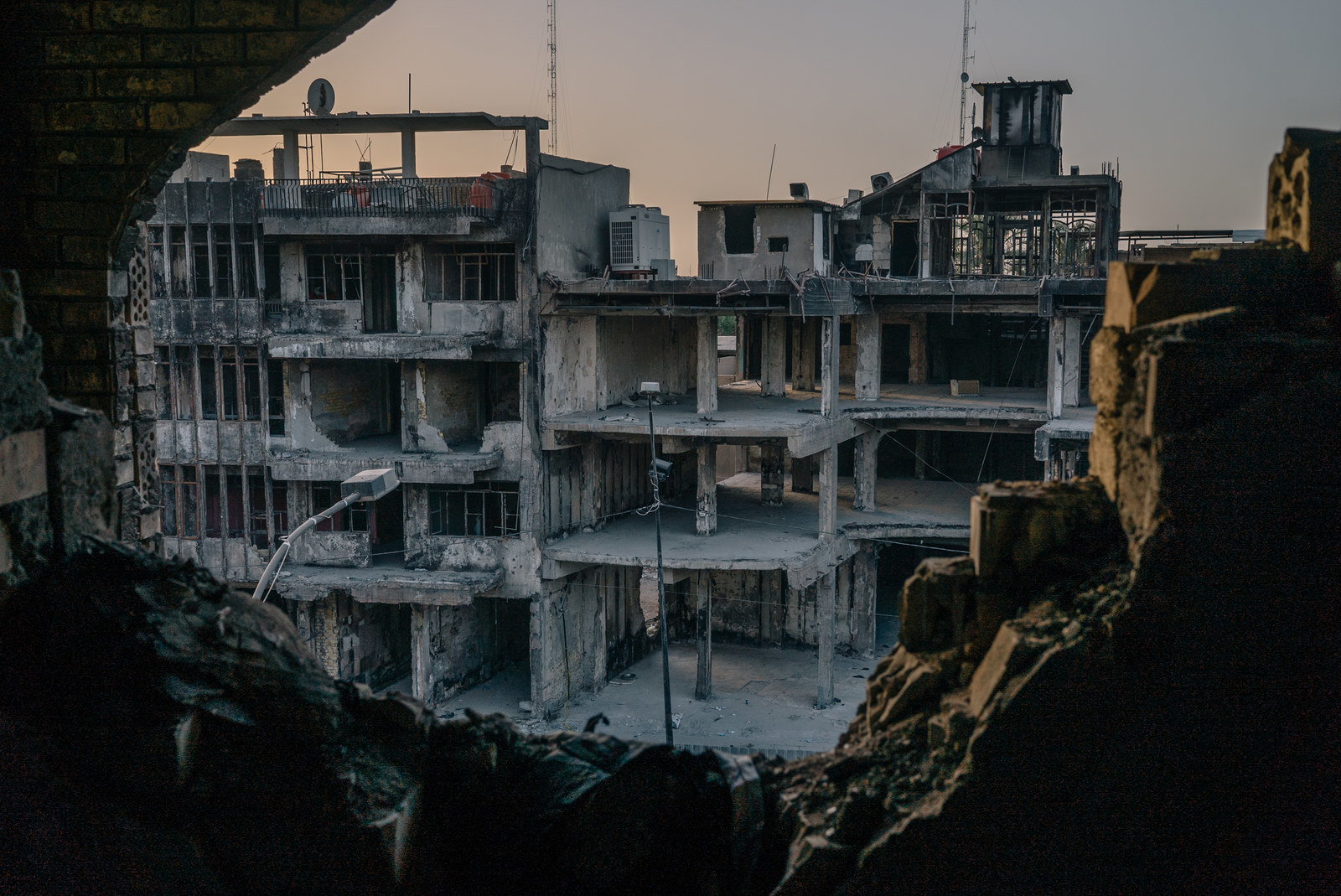
A view of the mall in Karrada, Sept. 22, 2016. Alice Martins for BuzzFeed News
Iraq’s wave of terror began with three attacks during the hot, chaotic summer that followed the US-led toppling of Saddam Hussein’s regime in 2003. That August, three attacks — outside the Jordanian embassy in western Baghdad, at the UN headquarters in the capital, and near the shrine of Imam Ali in the southern city of Najaf — established a pattern that would have dire consequences for Iraq.
In the years that followed, mainly Sunni insurgents set off thousands of bombs at outdoor markets and funeral tents in Shia neighborhoods. In turn, this fed the growth of armed Shia militias that prowled Sunni areas of the capital, abducting and murdering young men, in a cycle of violence that highlighted the government’s helplessness.
Authorities have sought desperately — if not always effectively — to stop these attacks, and stories abound of brave soldiers and cops putting themselves in harm’s way. Ending the attacks is a crucial element in boosting public faith in the elected government of Haider al-Abadi and weakening Shia militias largely organized, trained, or funded by Iran.
Every attack grinds away at public faith in the government. But the Karrada bombing was a far more severe jolt. Many Iraqis refused to blame ISIS for the bombing, instead placing responsibility on the authorities in Baghdad.
“I don’t believe it’s ISIS. I believe the government is trying to do this,” said Badeel Abdul Redha, 33, who lost his brother in the Karrada bombing. “There are problems between the parties, and the weak people like me are in the middle.”
“Women were screaming, children crying. There was firefighters yelling, and the nonstop sounds of sirens.”
Bowing to enormous public pressure voiced over social media and at politically charged funerals, al-Abadi’s government was forced to act. It discontinued the use of handheld bomb detectors long ago proven in UK courts to be fraudulent. Security operations were stepped up and checkpoints tightened; the frequently targeted Inner Karrada Street was turned into a pedestrian-only thoroughfare. Reducing the terrorist attacks is a priority for the government as well as the several thousand US and other military personnel in Baghdad.
Though US officials declined to confirm details of how Americans help Iraqis counter terrorist attacks, they acknowledged playing a role in training Iraqi personnel and advising officials on securing Baghdad. Many Iraqis feel the US bears a special responsibility for the transformation of their capital into one of the world’s most dangerous cities.
Iraqis frequently lament that it was during the botched aftermath of the US invasion that extremist militant groups began stocking up on Iraqi munitions and explosives left unsecured by American forces. They argue that it was the US that decided to disband the Iraqi armed forces, which could have fought the terrorists. And it was the Americans that hardened the country’s divisions by doling out government positions based on religious and ethnic identity.
To Americans watching a US presidential campaign unfold in which Iraq is an occasional rhetorical device, the story of US failures in Iraq may already sound like history. But 13 years later, Iraqis suffer daily from the consequences.
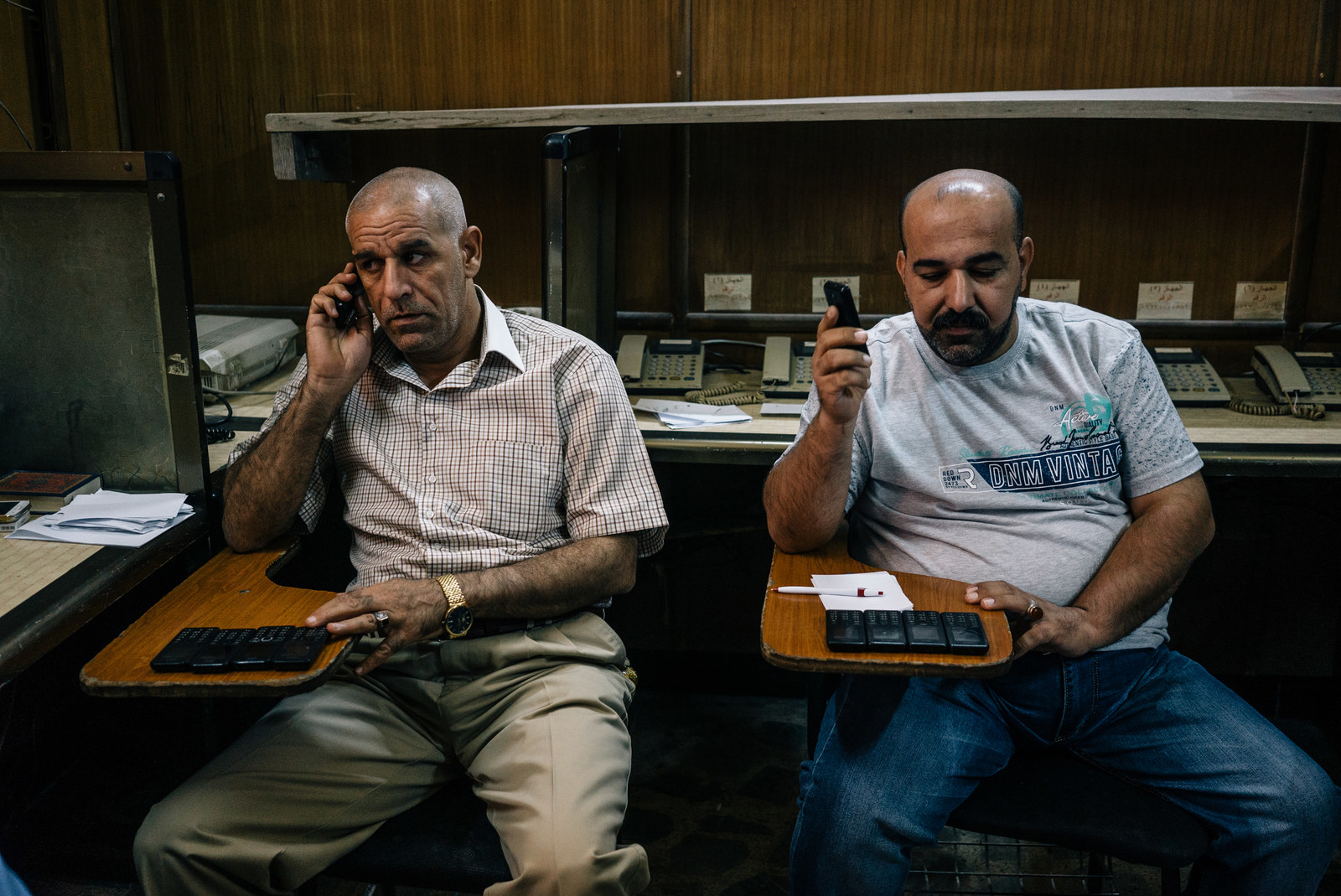
Phone operators at an emergency call center in Baghdad, Sept. 19, 2016. Alice Martins for BuzzFeed News
At the firehouse in central Baghdad, men sat around chain-smoking cigarettes and checking their phones. Across the city, many of the police, ambulance drivers, and other first responders were watching the big Germany–Italy European Championship soccer game on TV. It had been relatively calm in recent weeks, with long, hot Ramadan days subduing the unruly city. But then, just after midnight on July 3, the phones at Baghdad’s emergency center began to ring. Reports of a bombing in Karrada. Then a fire. The calls became increasingly panicked, desperate. Very quickly it became clear this was going to be a really nasty one.
Dozens of water tankers arrived from all over the city, with firefighters battling the inferno until well past dawn. “It was not a normal fire,” said Hamid, 28, a rescue worker. “People think if you douse a fire with water it will stop, but this wasn’t like that.”
Bombings in Baghdad are often followed by second or even third explosions and attacks timed to target first responders. Abbas Shelashadai, who has been driving an ambulance in Baghdad for 10 years, sometimes responding to multiple terrorist attacks in one shift, knows this all too well. Last year, Shelashadai, 58, was getting ready to pick up a wounded soldier in the southern Baghdad district of Dora when a colleague volunteered to take the call for him. When the team arrived at the scene, they were surrounded by insurgents, who opened fire on them. The driver, Akram Mohammad Tai, 45, was killed, the other two members of his crew wounded. Stricken with guilt for weeks, Shelashadai promised never again to let someone else take one of his assignments.
Despite the carnage he has witnessed, nothing prepared him for the Karrada bombing. Pulling up in his ambulance, he couldn’t quite believe the scale of the destruction. “People were burned,” he said. “It was something very awful. Women were screaming, children crying. There was firefighters yelling, and the nonstop sounds of sirens.”
The bodies of the wounded and dying were brought to Baghdad hospitals, which are barely capable of looking after the daily flood of victims of car accidents, let alone those hit by roadside bombs or gunshot wounds. A bombing of this scale was overwhelming. Distraught, angry relatives soon followed, and doctors remember a scene of chaos.
Dr. Mustafa Saleh was stunned by the number of patients and the extent of the injuries he saw when he walked into the emergency room of his west Baghdad hospital early that Saturday morning. ER doctors were still struggling to treat patients, many of whom had suffered severe lung damage and extreme burns exacerbated by toxic chemicals, as well as the more typical retinue of shrapnel wounds and crushed limbs.
“The situation in Karrada is devastating, because the bodies were mangled beyond recognition.”
“It was one of the bloodiest days of my life,” said Saleh. “Hundreds of people were trying to find their relatives, screaming. There was a huge number of ambulances. There was blood on the floors and at the entrance to the emergency room outside and a very bad smell of burnt flesh.”
Saleh is 35 years old, and his professional career has been consumed by war. He was trained at a time of peace, but watched in despair as the country’s medical system collapsed following the 2003 US invasion. He recalled the first day he was preparing to treat patients from a big terrorist attack, following a suicide bomb at a bus station. The ER chief at the time was a legend, a veteran of the Iran–Iraq war. “He said, ‘You guys are going to see some very hard things. I saw it in the war. Stay calm. Listen to me. And don’t panic.’” The now all-too-familiar procession of police, bleeding patients, and relatives began flooding the hospital. He and another young doctor began moving a patient when his severed head came off. “My colleague went into shock, his eyes became big, and I had to escort him from the hospital,” he said. It was the first of many such horrors.
Despite efforts by US officials to help rebuild the country’s medical infrastructure and billions spent on public health, the fleet of ambulances is already outdated, medics remain improperly trained, the number of doctors inadequate. Patients die needlessly of wounds that should be relatively straightforward to treat.
The carnage of the Karrada bombing shocked even Baghdad doctors long used to the most extreme violence. More than three months after the attack, officials have yet to identify around 60 of the bodies, and a handful of DNA specialists are slowly sorting through the human remains. “The situation in Karrada is devastating, because the bodies were mangled beyond recognition,” Saleh said.
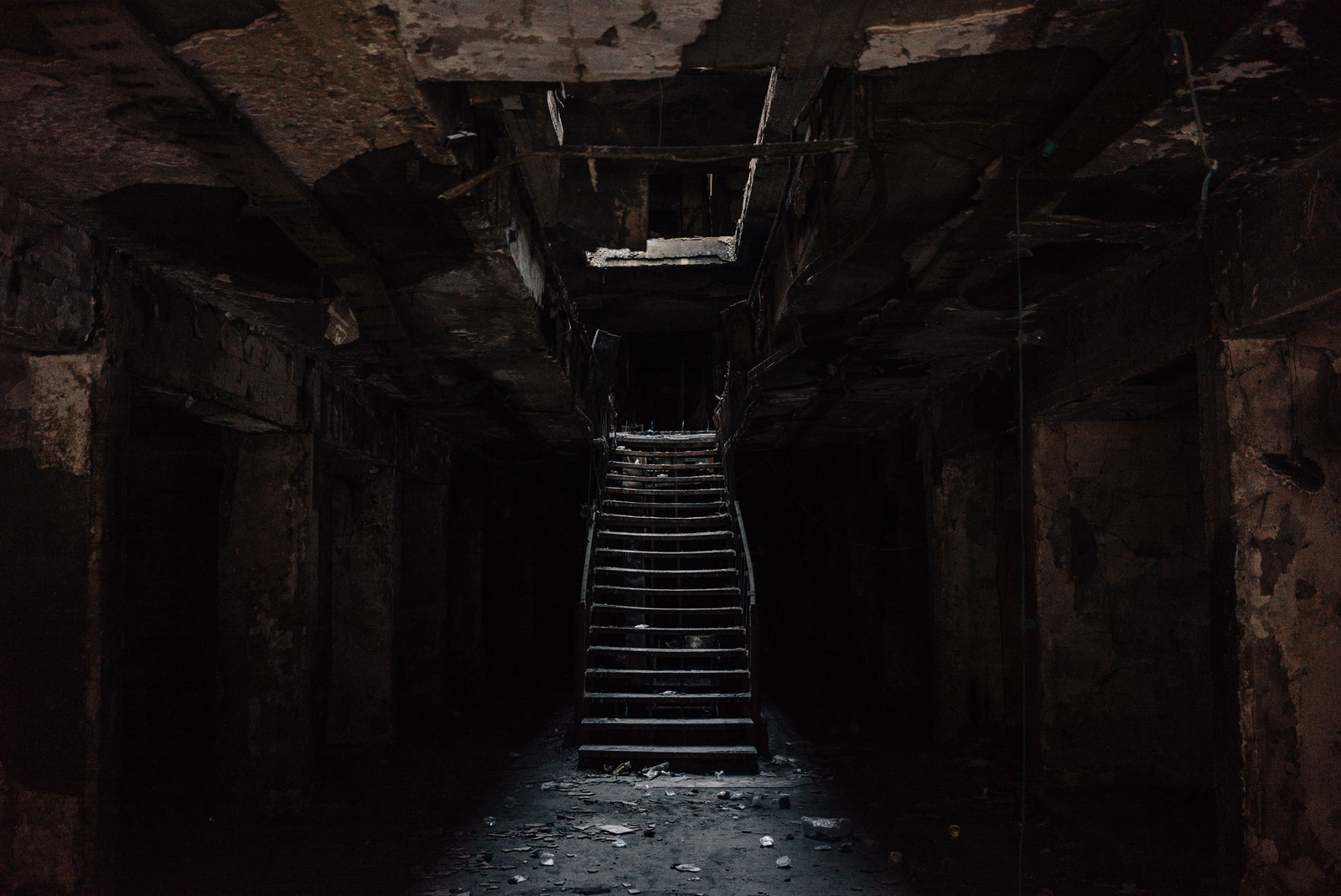
A staircase inside the mall in Karrada shows the extent of the damage from the bombing, Sept. 22, 2016. Alice Martins for BuzzFeed News
The bomb that exploded in Karrada in July was placed inside a minivan in or near the town of Khalis, in Diyala province, northeast of Baghdad. It entered the city through one of the capital’s gateways, making its way past numerous checkpoints. Baghdad security officials know all this because they have seen security footage of the vehicle driving into the heart of the city, including one clip where it was searched by a sniffer dog that failed to detect the explosives, as well as several other checkpoints that severely clog up traffic in the name of security.
“The dog checked it out and let it pass,” said Brig. Gen. Mohammed, head of the interior ministry’s department of explosives and unexploded ordnance. “We obviously failed.” He asked that his full name be withheld for fear of being targeted by assassins.
The attack revealed not only gaping holes in Baghdad’s security infrastructure, but the chasm that has opened up between the government and the people. When al-Abadi, the prime minister, visited the bomb site, in a middle-class Shia neighborhood that is a backbone constituency of his government, he was pelted with stones and met with jeers in a scene captured on video.
The high death toll and purely civilian nature of the Karrada bombing prompted a wave of grief and anger that forced Iraq’s government into action. In addition to getting rid of thefake bomb detectors, Iraq’s interior minister was sacked. Iraqi officials — so often full of bluster — gave rare candid assessments of the government’s failures, vowing to make improvements.
But stopping the terrorist attacks is no easy feat. Deep inside the heavily fortified perimeter that encompasses Baghdad’s international airport, at the headquarters of Iraq’s recently refurbished air force, sit several Cessna and King Air surveillance planes that serve as a first line of defense against the car bombs that enter the city.
“Many times we have stopped a terror attack,” said Maj. Gen. Anwar Hamad Amin, commander of the Iraqi air forces. “We see something suspicious and we send the information to the ground forces, especially around Baghdad. We send the films to the various agencies. We set up live feeds. The same day they send ground forces.”
Stopping suicide bombers on foot remains the most vexing challenge.
Greater Baghdad has a population of 9.5 million people, with perhaps 80% of the residents packed into 79 square miles of urban space straddling the east and west banks of the Tigris River, a size and density comparable in the Middle East only to Cairo. Identifying suspicious vehicles from the air is near impossible. The city’s outskirts are mostly sparsely populated desert or marshy wetlands, easier terrain for spotting suspicious gatherings or vehicles from the air.
Iraqis, backed by US intelligence and aircraft, have sought repeatedly to stop car bombs at their source. They have long suspected most of the them are assembled in makeshift workshops in areas under ISIS control, including Ramadi in Anbar province, or farther west toward the Jordanian border, where security officials say insurgents have access to ammonium nitrate produced at fertilizer plants. In one 45-day period last year, US military aircraft struck 47 ISIS weapons plants.
US armed forces and security officials in Iraq also hand Iraqi security forces intelligence gleaned from phone intercepts and satellite surveillance, officials said. “The coalition shares the results of our intelligence analysis with our Iraqi partners,” said US Army Col. Joseph Scrocca, spokesman for the US-led coalition. “Our intelligence support to the Iraqi security forces will give a better operating picture to [Iraqi] commanders in the field.”
But once the car bombs infiltrate the city’s perimeter, the main line of defense against terrorist attacks becomes the ubiquitous checkpoints at key points across Baghdad.

A police officer examines an X-ray image at a checkpoint, Baghdad, Sept. 21, 2016. Alice Martins for BuzzFeed News
Iraqi national police Sgt. Mohammed Zidane oversees one of the major checkpoints, at the entrance into the capital’s poor, mostly Shia Baghdad al-Jadida neighborhood, a frequent target of attacks. It is extremely dangerous work. Checkpoints often become targets when insurgents set off their explosives while awaiting inspection. Picking out which cars to search becomes a guessing game based on amateur profiling, neighborhood rumors, and, occasionally, intelligence tips from superiors.
“We look for people who are suspicious, someone wearing a jacket in the summer,” Zidane said. “Or if someone tells us there’s an unknown person walking around the neighborhood.”
Successes are rare, security officials sheepishly admit. Despite heightened security, another car bomb managed to make its way into Karrada again on September 4, killing six people and injuring 15. Frustratingly for Iraqi officials, that car had also eluded a sniffer dog. “The dogs get tired and need to be retired,” said Mowaffak Rubaie, an Iraqi member of parliament who previously served as national security adviser. “But their pickup rate is not 100% even when they’re fresh.”
After the Karrada bombing, Iraq began deploying hundreds of millions of dollars worth of vehicle X-ray equipment provided years ago by the US, which until recently had been mostly unused. They have slowly begun to train explosives experts to use them by identifying telltale shapes and colors that show up on a laptop screen as the vehicle passes through a giant gate.
“Their success depends on the person watching the scanner,” said Brig. Gen. Mohammad. “The explosive materials show up in different shapes and colors on the scanner.”
Officials say the new security measures have been relatively effective in keeping the larger car bombs out of the city, though bombers wearing suicide vests are a lot harder to detect. But even as Iraqis change their security measures and try to cut off pathways into Baghdad from the countryside, ISIS also adapts. For years, insurgents set off bombs around the time of dawn prayers, so Iraqi security forces remained most vigilant and devoted the most resources to morning shifts. “Now they use a new philosophy of later midnight attacks in places that are very crowded and armed forces will be weak and not expecting it,” Brig. Gen. Mohammad said.
Baghdad authorities long ago blocked vehicular traffic around sensitive sites, including the Shia shrine of Imam Kadhem in the city’s north. After the Karrada bombing, they cut off all but minibus traffic to the commercial boulevard.
“I lost my brother. I lost my shop, my business. I lost my friends. At night I can’t sleep. On the bus from home to work, I weep every day.”
Stopping suicide bombers on foot remains the most vexing challenge. A macabre museum inside the Interior Ministry’s bomb squad headquarters displayed some of the tools in the terrorist arsenal, including devices loaded into dolls. Brig. Gen. Mohammad cited a man who had set the trigger for his suicide belt under his collar, so that if he was arrested, shot, or dying, he could use his chin to set off the bomb.
Up to 20 security officials from the army, the interior ministry, the national intelligence service, and the traffic police staff major checkpoints like the one leading into Baghdad al-Jadida. Cars are divided into those quickly allowed past and those ordered to the scanner, similar to equipment used by US customs officials.
But just as in airports, any potential militant seeking to stage an attack can easily avoid the scanners, perhaps smuggle a car bomb into the city by carrying parts into town by hand and assembling the device inside, or find more obscure roads to infiltrate the city perimeter.
Brig. Gen. Mohammad said the sonars had picked up guns, rifles, alcohol, drugs, and contraband medicine. But in their entire time in use, they have yet to discover a single car bomb.
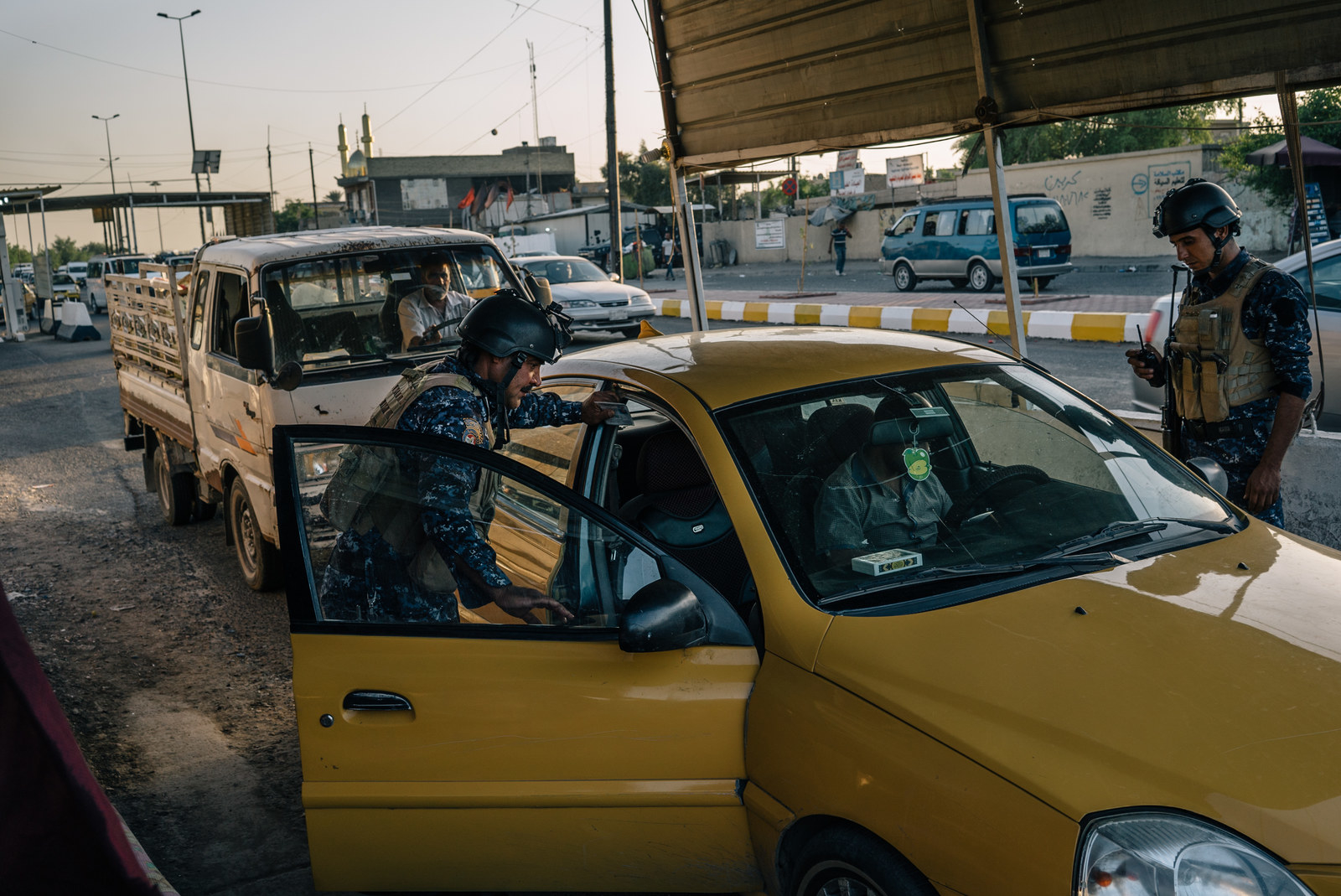
A police officer stops a car at a checkpoint, Baghdad, Sept. 21, 2016. Alice Martins for BuzzFeed News
Muslim traditions dictate that families bury their loved ones within a day of their deaths. But more than three months on, those still missing after the Karrada bombing, their bodies annihilated or unidentified, keep families from finding closure. Mulkia Mehdi, 82, lost two sons and five grandsons that night. A son, Mohammad, 49, and a grandson, Ahmed, 16, remain missing. Every day she sings an old Iraqi song of mourning to them.
I’d like you to come to dinner at sunset
I’d like to make my home nice for you
You, my beautiful sons
“Only God knows how much I took care of them,” she said, “how much I loved them. Now my home is empty. My eyes are black with tears.”
Despite promises, the government has failed to compensate or even assist victims who’ve lost their livelihoods in the bombing. Badeel Abdul Redha, 33, ran a shoe store in the Hadi Center and lost his younger brother, Katheer, in the explosion. The two had worked together, taking turns running the shop while commuting back and forth to their families in Sadr City. After days of searching, he found his brother’s remains at the morgue at Baghdad’s Medical City hospital, identifiable only by his shoes. He now has to take care of his brother’s brother’s wife and four children, along with his own family of six. He estimates his and his family’s losses at $100,000. He had spent around $500 to submit the paperwork to obtain compensation, but got nothing in return.
“I lost my brother. I lost my shop, my business,” he said, selling shoes once more at a makeshift street side table next to the burned-out husk of the mall where he once worked. “I lost my friends. At night I can’t sleep. On the bus from home to work, I weep every day.”
Iraq spends billions paying, feeding, and housing the security forces combating ISIS. Treating the victims of the unending violence is one thing, but the costs of the terrorism become unimaginable when you consider the loss in human potential, young lives ended, futures disfigured and dreams crushed.
There are bombings big and small, some where scores are killed and make headlines abroad, others where the casualties are lower, and don’t merit a mention. Hakim Chassib was helping a friend shop for a car in Baghdad’s Sadr City on August 15, 2015. His pal wanted to buy one of the new Iranian cars flooding the market, and Chassib, a 36-year-old fruit and vegetable vendor and father of four small children, was serving as a second pair of eyes. When the explosion hit, it was close by but didn’t kill him, and he remained conscious as he was knocked to the ground. “I saw people around me burned and dead, their heads and arms cut off,” he said. “People were screaming for me to get up and run, afraid there was a second bomb.”
Chassib felt a sharp burning sensation at the back of his neck and was unable to get up. He couldn’t feel his lower body. At the hospital he was given a grim diagnosis. A piece of shrapnel had damaged his spinal cord, and he would likely never walk again. “It is very depressing,” he said more than a year later, lying at the Ibn al-Kuff Hospital, three of his children beside him. “I can’t move. I can’t sleep. My back hurts all the time. My arms don’t move well. I don’t know how I will care for my family.”
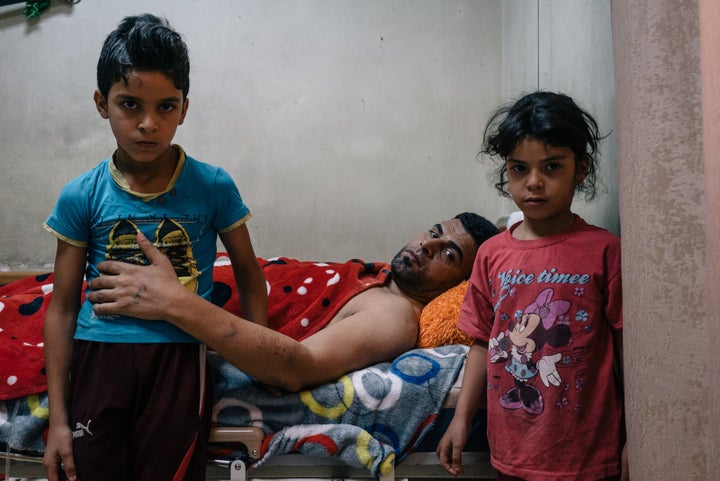
Hakim Chassib with two of his four children at the Ibn al-Kuff hospital in Baghdad, Sept. 22, 2016. Alice Martins for BuzzFeed News
Following the Karrada bombing, hundreds of Shia, Sunni, and Christians marched in the streets near the site of the attack, holding candlelight vigils to honor the dead and give solace to the grieving. Even if the world declined to show solidarity, Iraqis themselves would honor them. “Karrada! Karrada!” they chanted, as they held up Iraqi flags.
Dhulfiqar Oraibi’s family turned his room into a shrine in his memory, a life-size poster of him displayed where he used to sleep. Hundreds of well-wishers have offered the family their condolences. Dhulfiqar’s mother remains too grief-stricken to speak. “For the last 16 years he lived with me in this house, and I never really learned what he wanted out of life,” said his father, Ghanim. “I believe maybe he didn’t want to be in this world.”
“We’re getting used to this,” he said. “In the mid-1970s was the war with the Kurds. Then the big war with Iran. Then the big war with America. Then another big war with America. Then al-Qaeda. Now ISIS.”
His 1-year-old granddaughter, Fedek, climbed into his lap as he sat on a couch in his living room.
“She is always asking, ‘Baba? Baba?’” he said, distraught at the sight of Fedek’s teary eyes and the thought that she will never again see her father.
“Karrada! Karrada!” he erupted angrily. “Why always Karrada? Tell them to go to the politicians. They know where the politicians are. Why always come after the ordinary people?”
No comments:
Post a Comment